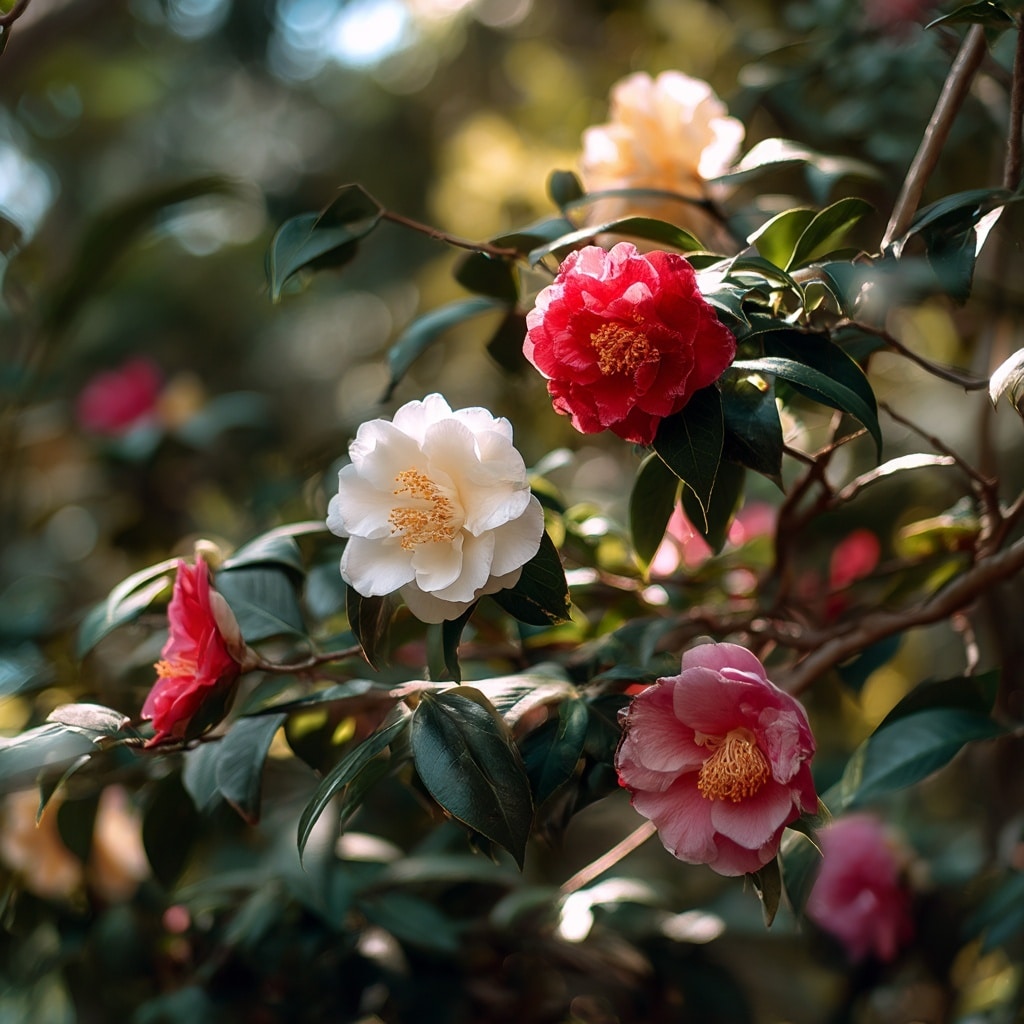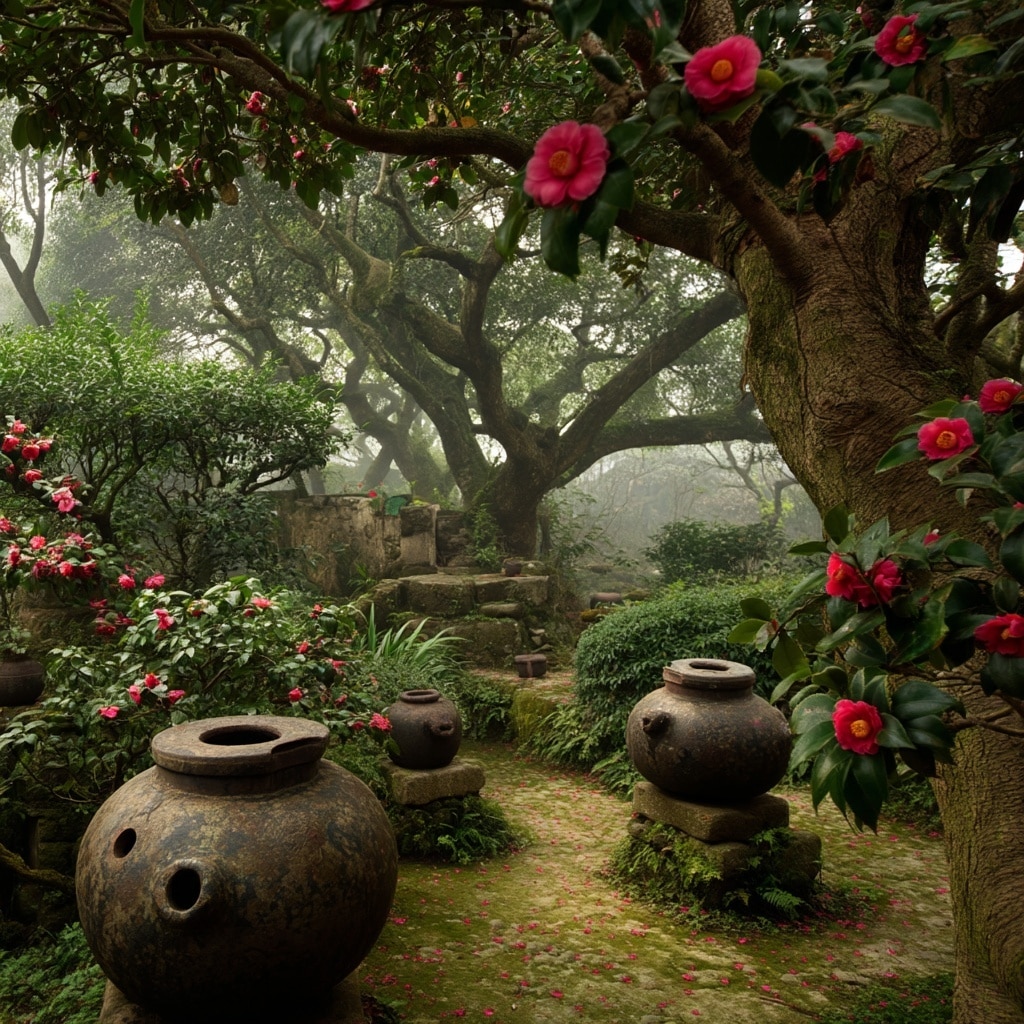Camellia is a flower of quiet elegance and powerful symbolism. With its lush petals and glossy green leaves, the Camellia has become a beloved sight in home gardens and floral arrangements around the world. More than just a pretty bloom, this flower carries a rich legacy of meaning rooted in ancient cultures and timeless traditions.
Often mistaken for roses, Camellias bloom in shades of red, white, pink, and yellow—each color revealing a different message. From love and devotion to admiration and longing, the Camellia expresses emotions that words often cannot.
Whether you’re growing it in your garden or gifting it to someone special, understanding the full meaning of the Camellia adds depth to its beauty. Let’s explore its history, symbolism, and surprising practical uses that make it more than just a decorative plant.
Table of Contents
History of the Camellia Flower
The Camellia has a long and storied history that stretches across continents and centuries. This remarkable flower traces its roots back to ancient China, where it was first cultivated as early as 2700 B.C. Not only appreciated for its ornamental beauty, but the Camellia also played a vital role in traditional tea-making—a practice still revered today.
By 1100 A.D., Japanese horticulturists had embraced the Camellia, integrating it into gardens, ceremonies, and eventually into their symbolic culture. Despite its early significance in Asia, the flower wasn’t formally classified in Western botanical science until 1753, when renowned taxonomist Carl Linnaeus named the genus Camellia in honor of Georg Joseph Kamel, a Jesuit missionary and botanist.
Belonging to the Theaceae or tea family, the Camellia genus now includes over 250 flowering species. Among the most well-known are:
- Camellia japonica – the classic ornamental variety
- Camellia sinensis – the species used for tea production
- Camellia sasanqua – valued for its fragrance and early blooms
- Camellia reticulata – notable for its large, ruffled flowers
Native primarily to East Asia, the Camellia is a hardy evergreen shrub or small tree. It typically blooms in late winter or early spring, brightening dull landscapes with bursts of vivid color when most other plants remain dormant.
Over time, the Camellia has grown far beyond its native habitat. From temple gardens in Kyoto to estates in England and modern backyards across the globe, this flower has captured the hearts of plant lovers and gardeners everywhere.
Symbolism of the Camellia Shrub
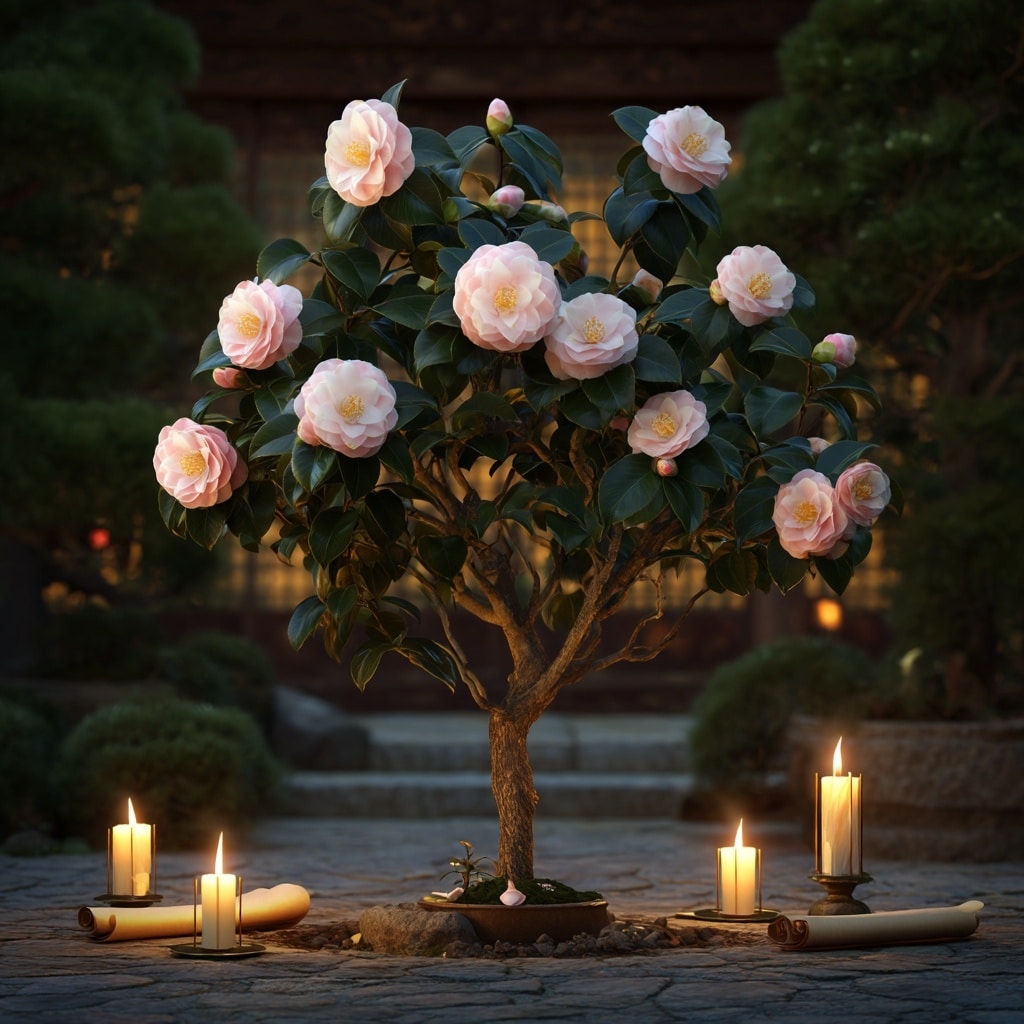
The Camellia is more than just a beautiful flower—it’s a symbol of deep emotional expression and cultural meaning. Across the world, people have long turned to this bloom to represent values like devotion, excellence, and steadfast love.
One of the Camellia’s most admired traits is its natural symmetry. Its perfectly layered petals give it a sense of balance and harmony, making it a powerful symbol of perfection and integrity. In fact, many gardeners admire the Camellia not only for its looks but for what it stands for.
In romantic symbolism, giving a Camellia can mean “I will love you always.” It carries connotations of everlasting love and loyalty, making it a meaningful flower for anniversaries, weddings, or heartfelt gestures.
Different cultures interpret the Camellia in their own unique ways:
- In China, especially in the Yunnan province, the Camellia is regarded as a symbol of lovers’ unity. The petals and calyx fall together when the flower dies, representing two souls remaining connected even in death.
- In Japan, the Camellia—called tsubaki—has both positive and somber associations. While it can symbolize admiration and humility, it was also once seen as an ill omen, especially the red variety, because the petals drop whole—thought to resemble a head falling, symbolizing sudden death among samurai.
- In Western traditions, particularly during the Victorian era, the Camellia was used in the language of flowers to suggest “my destiny is in your hands.” Depending on the context and color, it could imply admiration, desire, or even emotional distance.
Despite the varied interpretations, one theme remains consistent: the Camellia stands for profound emotional depth and a strong sense of character. Whether planted in your garden or gifted with intention, it speaks louder than words.
Camellia Flower Color Meanings
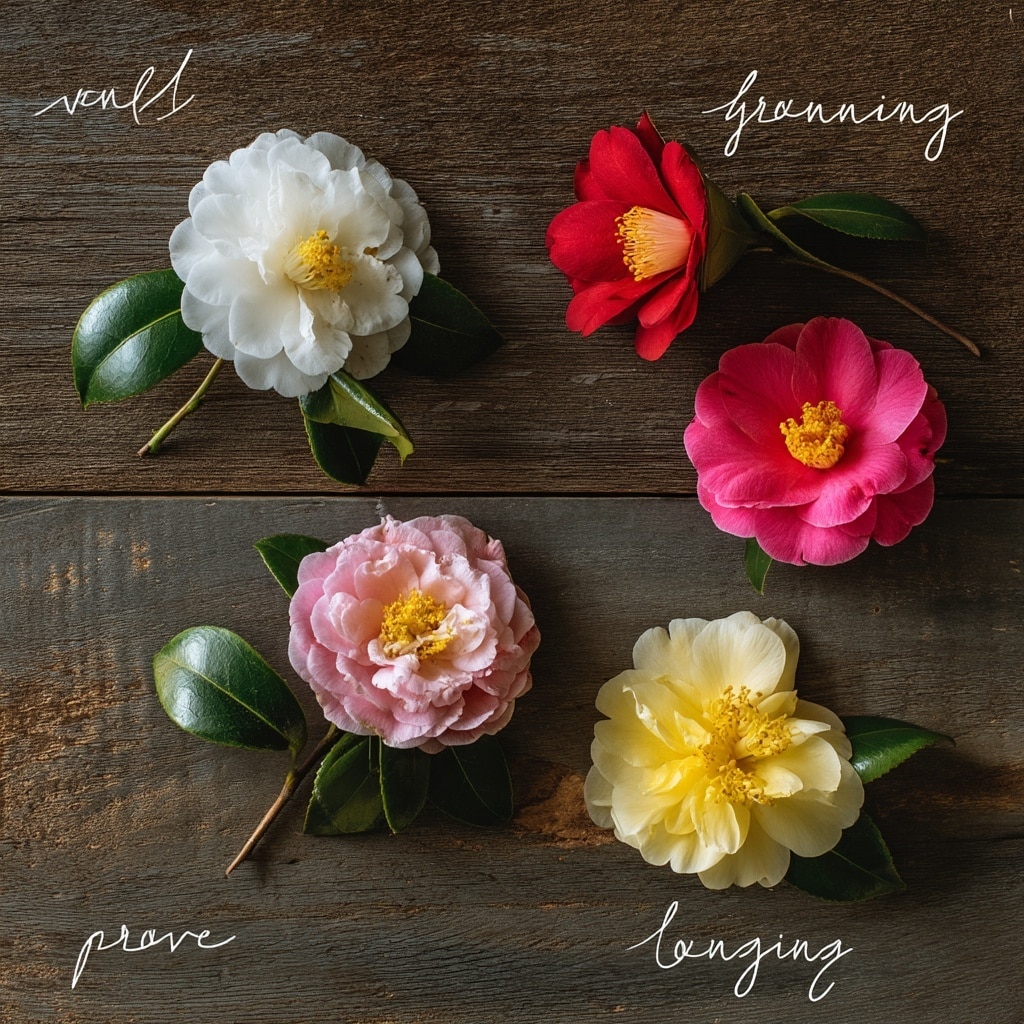
Each color of the Camellia flower carries its own unique message. Whether you’re choosing a bloom for your garden or sending one as a gift, understanding these subtle meanings adds depth and intention to your gesture.
White Camellia Meaning
The white Camellia represents purity, adoration, and perfect beauty. It’s often used to express sincere admiration for someone’s character, especially when words feel inadequate.
In some traditions, white Camellias are also associated with mourning and remembrance, making them a thoughtful flower for honoring loved ones who have passed.
Use it for: Weddings, condolences, or to say “you’re wonderful just as you are.”
Red Camellia Symbolism
Bold and vibrant, the red Camellia is a symbol of deep love, passion, and devotion. It’s the floral equivalent of saying “you’re the flame in my heart.”
Historically, red Camellias were also connected to honor and respect, making them suitable not just for romantic partners, but also for mentors or family members you deeply admire.
Use it for: Valentine’s Day, anniversaries, or heartfelt declarations of love.
Pink Camellia Meaning
The pink Camellia carries a soft yet powerful message of long-lasting affection, grace, and feminine beauty. It’s often linked to themes of gentleness, gratitude, and a wishing for well-being.
In some cultures, it also symbolizes refined elegance—a nod to the timeless charm many women embody.
Use it for: Birthdays, Mother’s Day, or expressions of appreciation and warmth.
Yellow Camellia Meaning
Rarer in cultivation, the yellow Camellia symbolizes hope, waiting, and remembrance of someone cherished. It reflects a quiet sense of longing and a gentle acknowledgment of time spent apart.
At the same time, yellow Camellias can also convey gratitude and the lessons learned through life’s experiences.
Use it for: Messages of thanks, reconciliation, or to express emotional depth.
Each color variation of the Camellia reveals a different side of the flower’s personality. Together, they offer a powerful language of emotion and meaning—without ever needing to speak a word.
Cultural Significance of Camellia Flowers
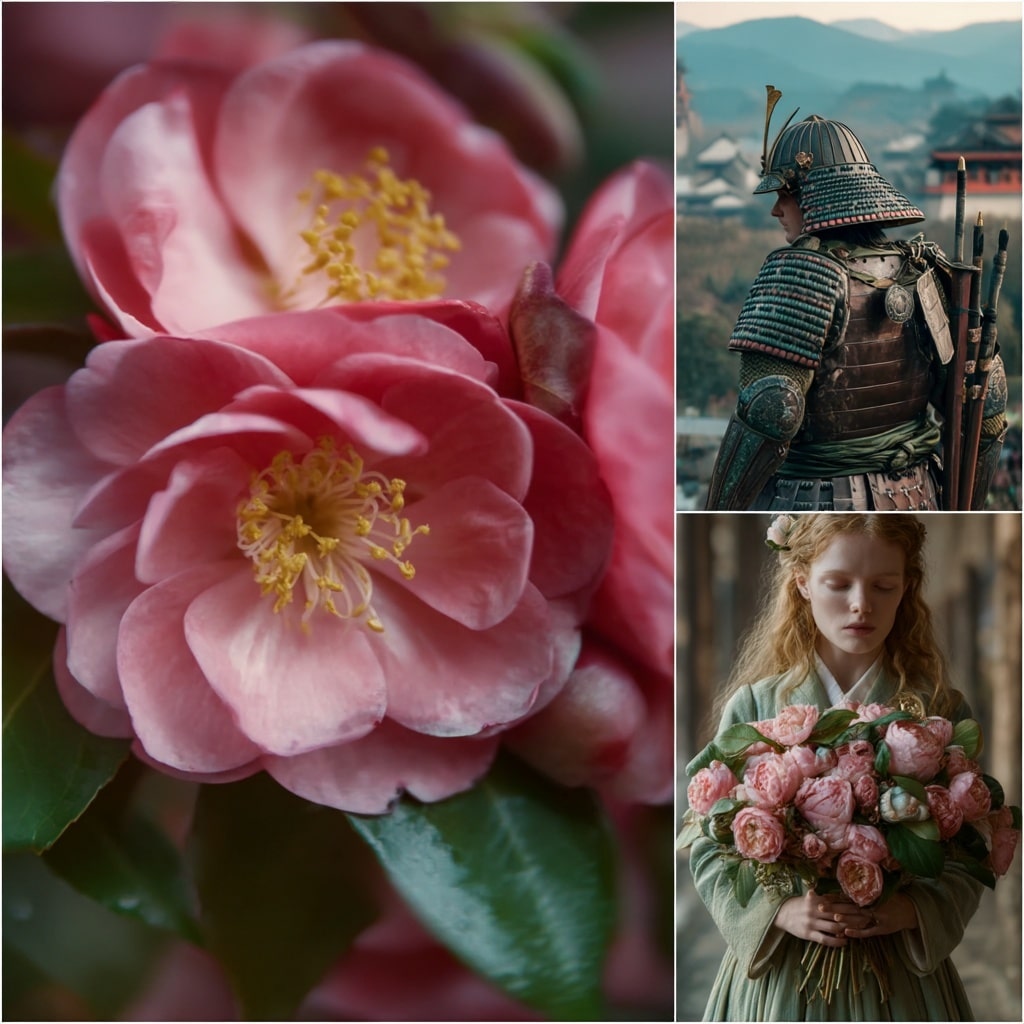
The Camellia has left its mark not just in gardens, but in the heart of many cultures around the world. Its beauty and symbolism have been celebrated across Asia and Europe for centuries, with each region attaching its own meaning and reverence to this elegant flower.
Japan: Strength and Transience
In Japanese culture, the Camellia—known as tsubaki—has long been associated with nobility and samurai warriors. The bold, simple shape of the flower was thought to reflect the virtues of courage, honor, and stoic strength.
Ironically, the red Camellia was also avoided by warriors, as its petals fall whole rather than one by one, resembling a beheaded soldier. Despite this, the Camellia still holds a place of respect in Japanese art and symbolism, especially the Higo Camellia, which was cultivated by noble families.
It also serves as a gentle reminder of life’s transience, making it a meaningful flower for moments of reflection.
China: Unity and Devotion
In China, the Camellia is a beloved bloom, particularly in the Yunnan province, where it is the official provincial flower. It blooms from the Chinese New Year through late spring and is often used in celebrations of love and unity.
Chinese symbolism views the Camellia as a perfect couple—the petals and the calyx (the green base of the flower) fall together, representing two lovers whose bond remains even in death. This makes it a deeply romantic flower, often exchanged between partners or used in wedding decor.
Victorian England: Language of Flowers
During the Victorian era, flowers were used to communicate feelings that couldn’t be spoken aloud. In this language of flowers, the Camellia meant “my destiny is in your hands.”
While typically romantic, the Camellia could also imply emotional restraint or dignified detachment, depending on the context and the flower’s color. This made it a favorite among poets, painters, and garden designers of the time.
Whether tied to a warrior’s legacy, the loyalty of lovers, or Victorian courtship, the Camellia holds a deep cultural significance that transcends borders and generations. Its story is as layered and timeless as its petals.
Spiritual and Biblical Meaning of Camellia
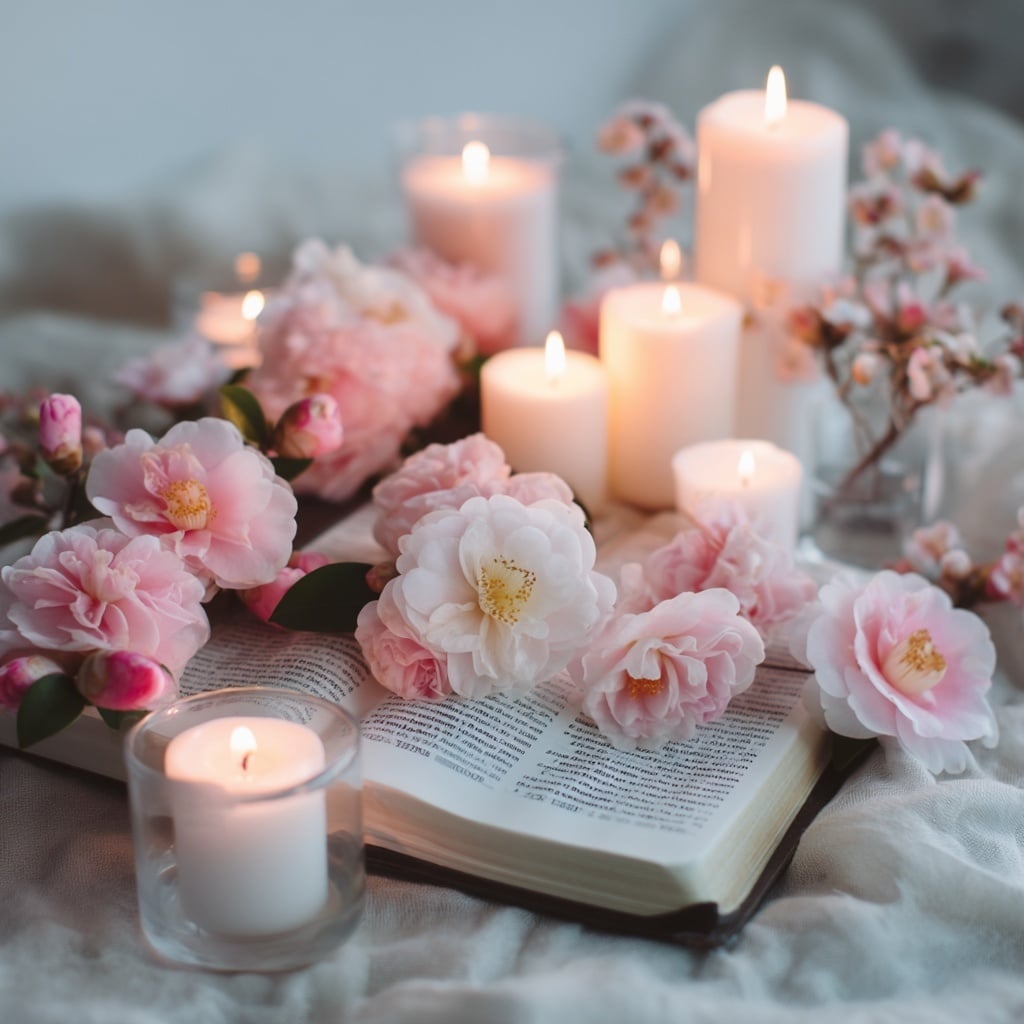
Beyond its cultural roots, the Camellia holds spiritual significance for many who view flowers as messengers of deeper truths. With its soft, full blossoms and quiet elegance, the Camellia often symbolizes inner peace, feminine energy, and spiritual grace.
In spiritual symbolism, the Camellia is sometimes seen as an embodiment of the Divine Feminine. Its gentle curves and calm presence echo the qualities of compassion, nurturing, and emotional strength. For many, the flower becomes a visual representation of balance between strength and gentleness—qualities often attributed to spiritual maturity.
Biblical Interpretations
While the Camellia isn’t mentioned directly in the Bible, it is sometimes associated with biblical virtues such as humility, purity, and selfless love. Especially in Christian interpretations, the white and pink Camellia can represent the qualities of Mary, the mother of Jesus—emphasizing her modesty, beauty, and spiritual devotion.
Some faith-based practitioners believe that meditating on the Camellia or incorporating it into prayer spaces can promote:
- Emotional healing
- Gentle wisdom
- Gratitude
- Renewed faith
In energy work and spiritual healing, the Camellia is also thought to encourage friendship, confidence, and a clear emotional flow, making it a flower that harmonizes both the heart and the spirit.
Whether used as a spiritual symbol or a sacred representation of divine qualities, the Camellia adds more than beauty to your space—it brings a quiet kind of wisdom that resonates within.
Camellia Flower Tattoo Meaning
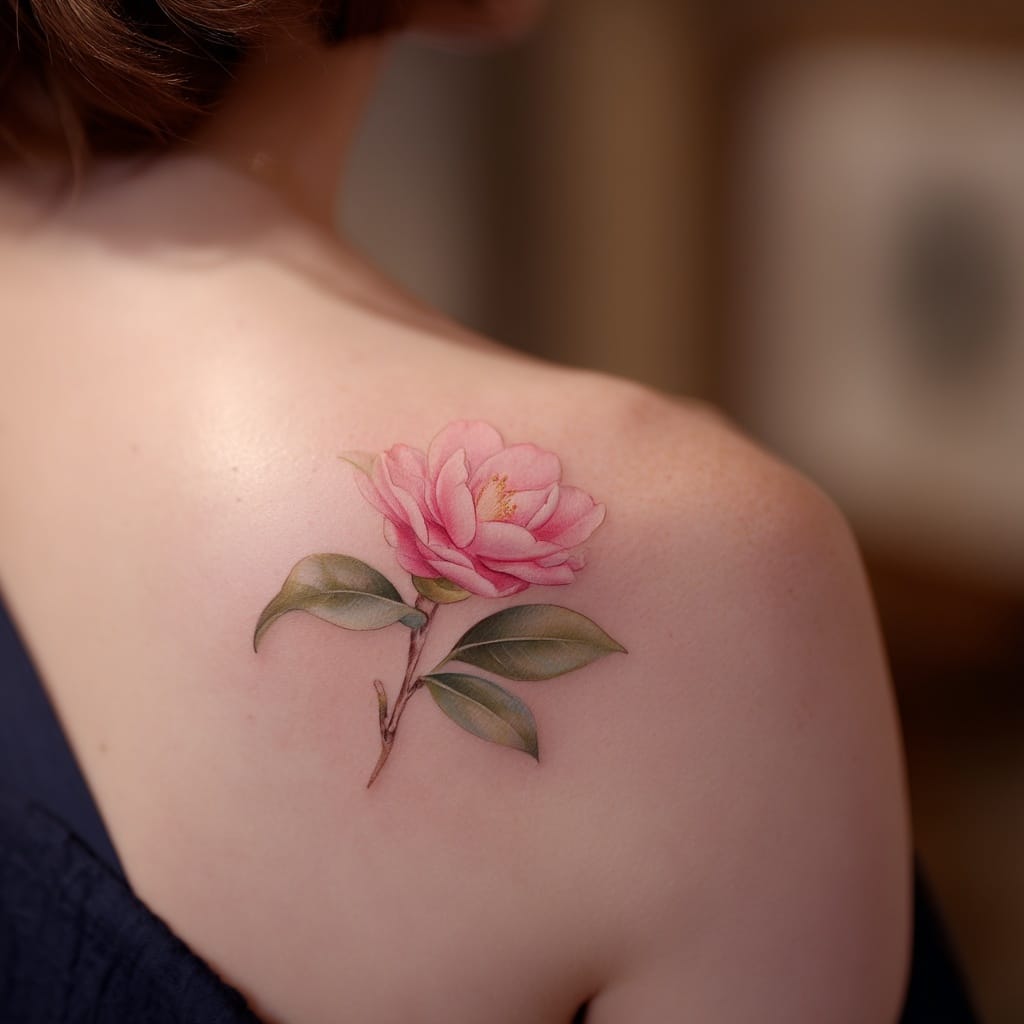
Choosing a Camellia flower as a tattoo is more than a statement of beauty—it’s a deeply personal symbol that speaks to one’s inner story. Whether inked in soft watercolor or bold lines, a Camellia tattoo often represents love, resilience, and unspoken emotion.
A Feminine Emblem
For many, a Camellia tattoo symbolizes feminine strength, elegance, and grace. The flower’s layered petals echo the complexity of a woman’s experience—beautiful on the outside, with emotional depth at the core.
A pink or white Camellia inked on the skin may express inner peace, self-love, or gentle confidence, while red variations often carry a more passionate message of eternal love or romantic devotion.
A Story of Loss or Growth
The Camellia can also represent the quiet strength that comes from overcoming heartbreak. Many people choose this flower as a tribute to lost relationships, painful farewells, or periods of personal growth.
Its association with unspoken longing and beauty through hardship makes it an ideal symbol for those who have weathered emotional storms—and come out stronger, softer, and wiser.
Uses of the Camellia Plant
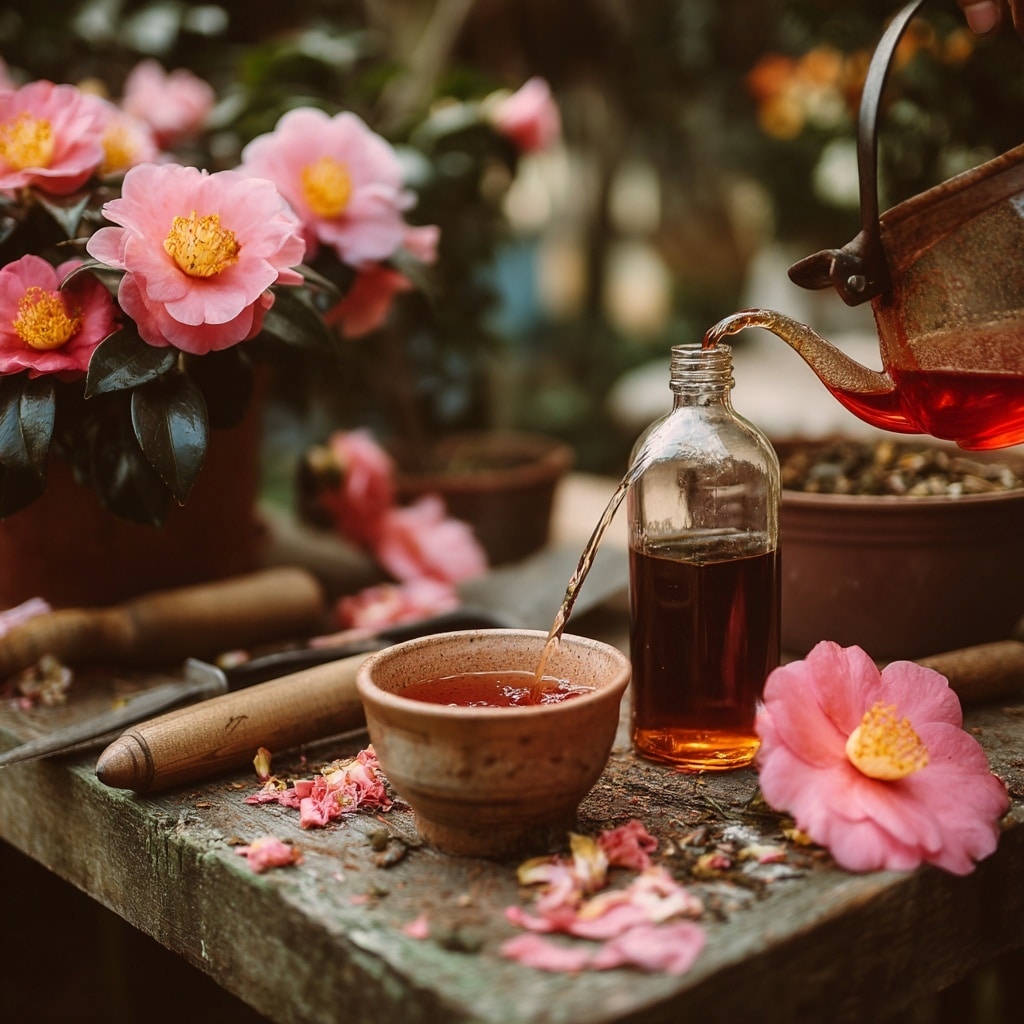
While admired for its ornamental beauty, the Camellia is far more than a pretty garden flower. From ancient tea rituals to modern skincare and natural remedies, this versatile plant has been valued for its medicinal, agricultural, and cosmetic uses across centuries.
In the Garden
In landscaping, the Camellia is a favorite among gardeners for its evergreen foliage, long-lasting blooms, and low-maintenance nature. It thrives in partially shaded areas and offers a burst of color in late winter or early spring—when few other plants are in flower.
Camellias are ideal for:
- Flower beds and borders
- Hedging and screening
- Containers or pots
- Cut flower arrangements for vases
As the blooms fall, they often form a soft carpet beneath the plant—adding to the flower’s charm and appeal.
Tea and Oil
One of the most notable Camellia species is Camellia sinensis, the source of green, black, white, and oolong teas. Revered for its antioxidant properties, Camellia tea is known to:
- Boost immunity
- Support heart health
- Improve digestion
- Fight inflammation
In addition to tea, the oil extracted from Camellia seeds—often called Tsubaki oil—is widely used in Japanese beauty rituals. It moisturizes skin, strengthens hair, and is packed with nutrients and vitamins.
Medicinal and Agricultural Benefits
Traditional medicine systems across Asia have used Camellia extracts for centuries to treat ailments such as:
- Headaches
- Fever
- Diarrhea
- Infections
- Hypertension
Its natural compounds are believed to have antibacterial, antiviral, antioxidant, and anti-inflammatory effects.
In agriculture, Camellia seed oil has been used as a natural pesticide, especially effective against rice pests and aphids. And in some regions, the dried leaves are steeped in hot water to create herbal remedies or dyes from the petals.
⚠️ Note: While Camellia-based products offer many benefits, always consult with a healthcare provider before using them for medicinal purposes.
From garden beds to teacups and healing traditions, the Camellia proves itself to be as useful as it is beautiful—making it a flower worth far more than its petals suggest.
Conclusion
The Camellia is more than a garden favorite—it’s a flower rich in meaning, history, and purpose. Whether you’re drawn to it for its symbolism of love and admiration, its cultural and spiritual depth, or its practical benefits in tea and skincare, this elegant bloom continues to enchant gardeners and flower lovers alike.
With its timeless beauty and quiet strength, the Camellia reminds us that the most meaningful things in life often come softly—but leave a lasting impression.

